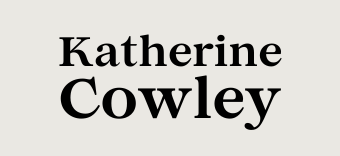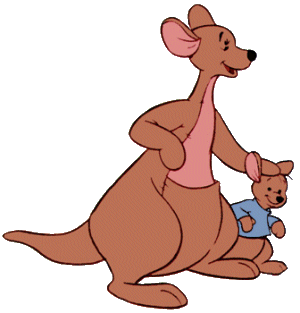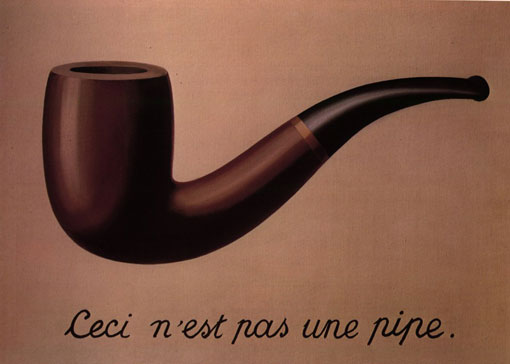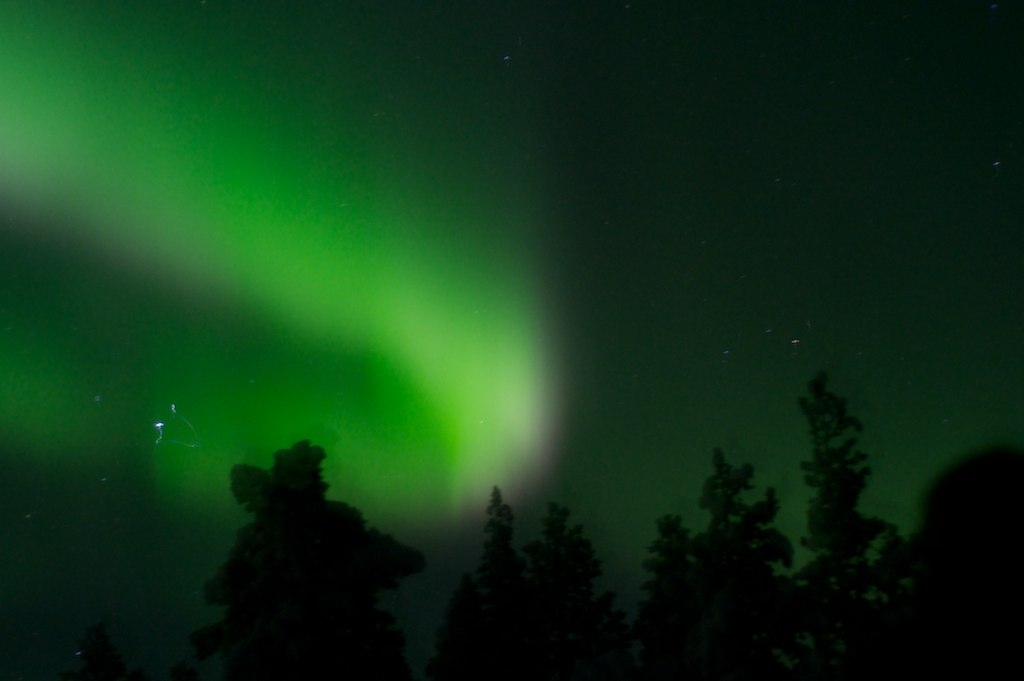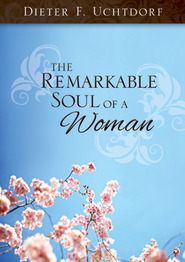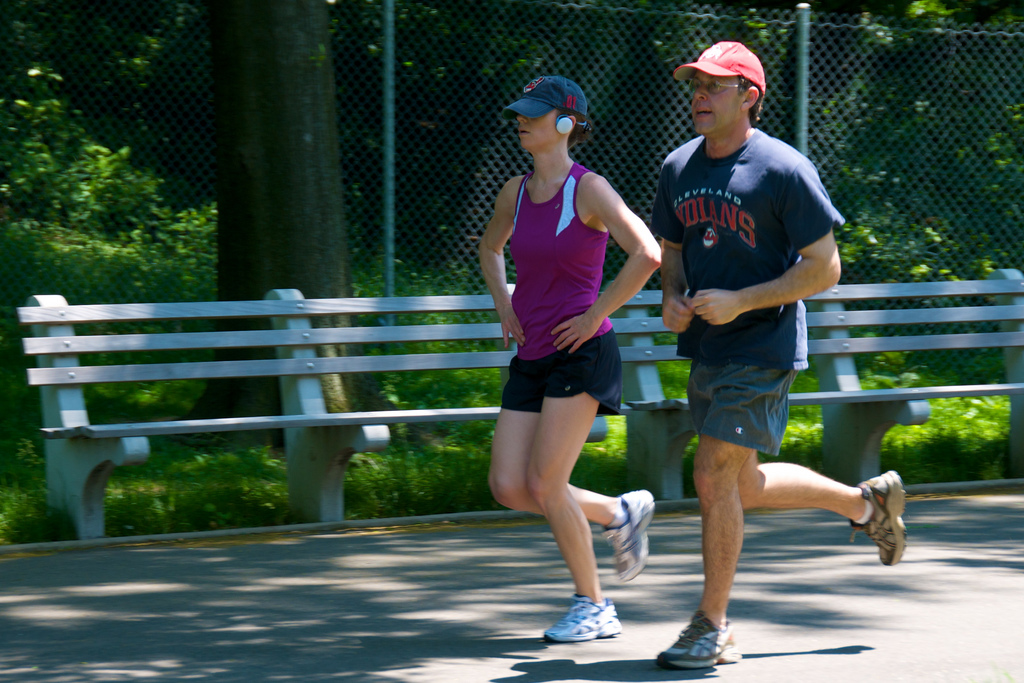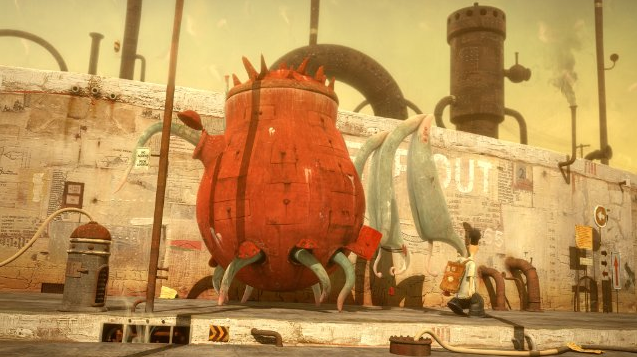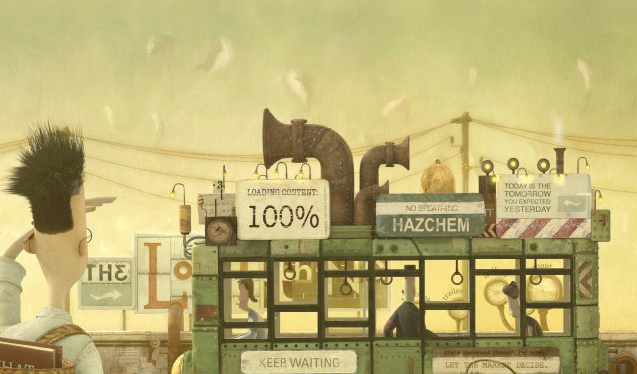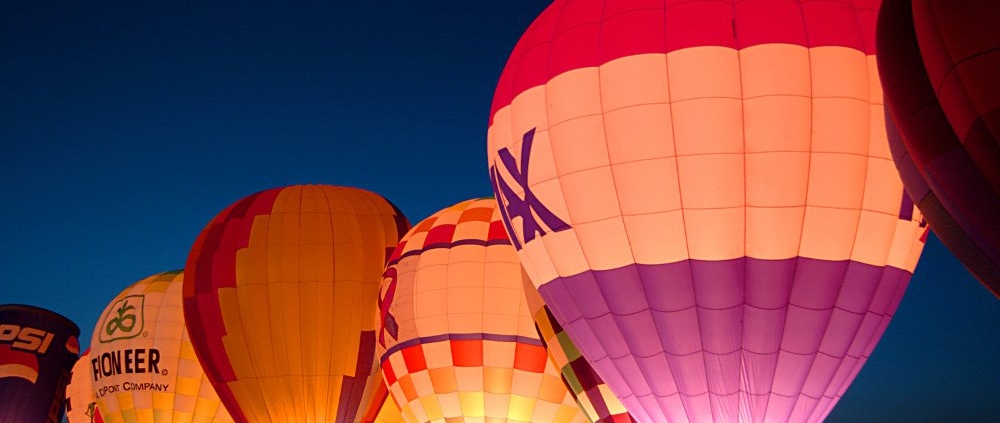Why I’m Still Going to Tell my Daughter That She’s Beautiful
Last week Lisa Bloom wrote an excellent article in the Huffington Post titled “How to Talk to Little Girls.” I agree that it’s sad that “twenty-five percent of American women would rather win America’s Next Top Model than the Nobel Peace Prize.” I agree that you should talk to little girls about their minds and “model for [them] what a thinking woman says and does.” I pretty much agreed with everything she wrote and how she wrote it. But a day later I found myself a little bothered by Lisa Bloom’s argument.
What Bloom proposes is that you should not talk to little girls about their looks, clothes, hair, etc., because “teaching girls that their appearance is the first thing you notice tells them that looks are more important than anything.”
Thus, when I tell my daughter that she is beautiful or when her grandma complements her on a cute outfit, we are ruining her.
I can’t bring myself to believe that this is true.
I agree with Bloom’s intent, and believe that our culture has major problems. I find myself regularly angered by the objectification and sex-tification of women, and increasingly so with the male-as-eye candy (“let’s objectify men because they objectified us first”). And I believe that a focus on appearance can feed into these things, as well as a list of other problems.
However, I feel much more comfortable with a modified version of Bloom’s argument: “Only focusing on physical appearance will cause long term damage on the well-being of little girls.” I think the word only is the key.
Let’s imagine the reverse. A little girl that grows up, never once having anyone complement her physical appearance. To me, this could be just as damaging, even if all little girls were treated that way. The problem is that it devalues the body, says that the body is not important, an annoyance even. Something that should be, at best, ignored.
But the body is important. Our minds are made up of physical matter. Our eyes experience wonder at the world. Our ears hear sounds, and with our mouths, make communication possible. The way we take care of our bodies through food and exercise makes it possible for us to run, breath, live, move, experience. Our fingers can type and turn the pages of a book.
Taken to an extreme, taking care of our bodies becomes destroying our bodies, and our society is filled with this extreme, so I appreciate Bloom’s argument even if I don’t agree with it completely.
I admit, part of my perspective on this subject comes from my membership in the Church of Jesus Christ of Latter-day Saints. Our theology teaches that our bodies are as essential as our spirits. For us, original sin was more of a transgression than a sin, the forbidden fruit necessary so we could have a full range of experiences with our bodies and spirits. Recently, one of our church leaders, David Bednar, gave a discourse entitled “Things as they Really are.” As Bednar points out, one of the challenges and risks of cyberspace is that online interaction can devalue the body, causing us to “miss the richness of person-to-person communication”; “many forms of computer-mediated interaction…can displace the full range of physical capacity and experience.”
The physical body is essential and good. Ignoring the physical body as we speak to little girls will hurt them just as we can hurt them by focusing only on physical appearance. I agree with Lisa Bloom–I want my daughter to be smart and to value her mind. I do not want her to not kill her body by dieting or change her body with plastic surgery or succumb to the propaganda that a particular physical form equates to happiness and success. And so I read my daughter books on trucks and animals, sing her songs and rhymes about both pirates and princesses, and try teaching her ridiculously big words for a child under the age of one (I couldn’t help it–incandescent is such a good word). I also help her exercise her muscles, teaching her to crawl and stand, to grab and to reach. And on some days, I dress her in an absurdly cute, frilly yellow dress covered with flowers and tell her that she’s beautiful. I hope she feels good in the same way I feel good when my husband tells me “You’re beautiful” before he asks me about what I’ve been reading, thinking, and doing.
(my daughter enjoys her physical body)
In fact, every single day I tell my daughter that she is beautiful. And every day, I teach her what it means to be a beautiful woman. A beautiful woman is appealing both inside and out. A beautiful woman is smart, and maybe some day will be like her mom and grandma and go to graduate school. A beautiful woman is spiritual and sensitive to the needs of those around her. A beautiful woman is healthy and strong, and while she takes care of her appearance, she feels confidence in her body as it is. Dearest daughter, you are beautiful.
Forgetting (or never knowing) Real Kangaroos
Today I learned what a kangaroo looks like.
Not that I didn’t know what a kangaroo is. A marsupial that can carry its young, it has ears, can hop, and lives in Australia.
The problem being that this is the only image of a kangaroo that I could bring up in my mind:
Yes, these are the kangaroos from Winnie the Pooh. (Kanga and little Roo.)
This is disturbing to me on multiple levels.
Mostly, I’m disturbed because of this painting by Rene Magritte:
The piece is called “The Treachery of Images.” The description reads, “This is not a pipe.”
To me, the point is, we’re so attached to images that we intentionally mistake them for reality. Someone holds up a picture of a pipe and asks, “What is this?” and we respond “It’s a pipe.” When really, it’s a representation of a pipe. It certainly can’t be smoked.
This brings me to Saussure. A linguistic theorist. Basically, he says that we have signs, that we use to communicate and interpret the word. A sign might be the word “kangaroo”; I’d go so far to say that a picture of a kangaroo could also be a sign. A sign is made up of two things–the signifier (the form of the sign, whether it’s the letters that make up the word “kangaroo” or the cartoon outline) and the signified (the concept that is represented by the sign–a real-life kangaroo hopping along in Australia).
So what happens when the first and only thing that I can bring to mind with the word kangaroo is a picture from Winnie the Pooh? The word no longer means a real-life marsupial, but a cartoon image to me. And if I look at a picture of Kanga and little Roo, (and get songs about Christopher Robin stuck in my head), and I can’t remember what this image of a kangaroo is actual supposed to represent, then the sign, the image, is not pointing to anything after all. It’s an end unto itself. And the kangaroo has officially become extinct–at least to me.
My husband helped me rectify this situation. We spent half an hour on youtube tonight watching kangaroos jump, drink water, box, and have baby kangaroos (called joeys–who knew?!?) climb in and out of their pouches. For good measure, we watched videos of other marsupials, like koalas and tasmanian devils.
I feel much better about life now. My representation (the word kangaroo, and the cartoon picture) is once again a representation, and not an end unto itself.
(Note: I have put no pictures of real kangaroos in this post. If you don’t remember what a kangaroo looks like, you should google it. Also, I didn’t want to think about the implications of a video of a kangaroo still being a representation, and no the actual thing….)
3 Months of Nonfiction (Jan-Mar 2011)
This next week or so my plan is to review all the books/films I’ve read in the first three months of 2011.
For today, I’ll post my nonfiction reads/views.
1. Aurora: The Mysterious Northern Lights by Candace Savage
by Candace Savage
Did you know that for every time there are Northern Lights they are mirrored by coordinating Southern Lights over Antarctica? Or that in some mythologies, if you disturbed the Northern Lights people believed the lights might decapitate you or whisk you away?
To me, this is the ideal for nonfiction–educational and entertaining. A mix of science and mythology, of past and present. It’s filled with great photography and has a beautiful layout. And the writing is stellar. My favorite quote from the book:
By rights, we humans ought to live in constant wonderment, amazed by every star, cloud, tree, leaf, feather, fish and rock. Amazed by the supreme improbability of our own intricate existence. But except for a gifted few (artists and mystics), we lack the stamina for so much mystery. It takes a shock–a sudden burst of beauty–to wake us to the wonder of our reality.
I loved reading this book. It really just made me want to learn again, about everything from astronomy to electromagnetics to Aristotle to mythology. And if something can reinvigorate my love for learning, it’s well worth the read.
2. 49 Up
I admit, a couple years back I went through a marathon, watching almost every documentary in Michael Apted’s Up series. The gist is that every seven years, the same (charmingly British) individuals, from all arenas of life, are interviewed and then edited into a documentary. (Roger Ebert has reviewed each of the film’s–read Ebert’s review of the whole Up series.)
I admit, 35 Up is still my favorite in the series–perhaps because I saw it first, and it’s the only Up film I’ve seen multiple times. But 49 Up maintained the quality of the other films, reforming a mosaic of individual lives by refitting together the pieces of their pasts in extraordinary new ways in an attempt to capture the present.
In the documentary, one of the character’s says something along the lines of, I know this series is entertaining, but the question is, does it have value?
I think so. Every time I watch an Up film I reevaluate where I am and where I want to be in 7 years time.
3. The Remarkable Soul of a Woman
I always find myself uplifted by Dieter F. Uchtdorf, and this was no exception. His Latter-day Saint take on the role of women was both motivational and comforting. He focuses on compassion and creation as keys to life’s happiness. I love his focus on how creation is God-like, and how we create any time we write, re-see something, inspire a smile, bring order to chaos, and through so many other things. I find this is true–when I’m creating and adding to the world, rather than just consuming its products, I find so much greater joy in day-to-day living.
4. Waiting for “Superman”
Well-edited, heart-wrenching documentary that reaffirms, our educational system can be fixed. It works so well because of its focus on individual hopes, dreams, and aspirations.
I mentioned this documentary to a friend and she expressed strong feelings that our educational system is not broken, that we do provide a strong educational system to most people. Yet 5 minutes later she was talking about problems with a school principal, children with special needs and interests not being taken care of, and other problems she and her family have experienced. To me, our educational systems may not be broken in the sense that they are still usable, but that doesn’t mean we don’t need to fix them.
5. Babies
This was a fun documentary that followed four babies from different parts of the world–Namibia, the US, Japan, and Mongolia–during the first year of their life. It’s not one of those documentaries that’s out to change the world. Rather, it’s a poetic celebration of life itself and the common humanity we share no matter where we’re from.
In conclusion…
I think I’ve done a good job of choosing my nonfiction reads/views this year–I’d strongly recommend each of these books/films.
Look for my upcoming reviews later this/next week, on these categories (links will be added as I get the posts up):
- Parenting Nonfiction
- Literary, Adult, and Film Fiction
- YA and MG Fiction (including a few graphic novels)
- Crafting
- Picture Books
Northern Lights image by Beatrix Rose Photography
Post Formats is a theme feature introduced with Version 3.1. Post Formats can be used by a theme to customize its presentation of a post.
Lorem ipsum dolor sit amet, consectetuer adipiscing elit. Aenean commodo ligula eget dolor. Aenean massa. Cum sociis natoque penatibus et magnis dis parturient montes, nascetur ridiculus mus – more on WordPress.org: Post Formats
The Lost Thing, by Shaun Tan and Andrew Ruhemann
I may be unusual, but my favorite Academy Awards are Best Foreign Film, Best Documentary, Best Short Documentary, Best Short Film, and Best Animated Short Film. Because people will go see The King’s Speech and Inception anyways, but having awards for shorts, docs, and foreign films brings broad recognition to forms that, unluckily, are often ignored.
This year I was blown away by the Oscar winner of the Best Animated Short film, Shaun Tan and Andrew Ruhemann’s “The Lost Thing.” You can view “The Lost Thing” on Indie Movies Online or buy it on itunes. Here’s the trailer:
It’s a film that invites you to wonder again, to notice things, to slow down, and it does so by capturing a sense of wonder over its 15 minutes. Here’s a few of my thoughts on the film:
Introduction to the Lost Thing
I love the way that we as an audience meet the Lost Thing. Without using the Blair Witch project hand-held look, we go into the Point of View of the narrator, seeing first a bell, then circling the Thing, then seeing the whole creature from a low angle looking up. While we never get into the main character’s head–we never find out why he cares enough to take care of the Lost Thing–the camera angles and cuts create a close psychic distance to the narrator, and because he cares about the Lost Thing so do we.
The Solution to a Soul-Less World:
As is common in literature and film, we’re presented with a fallen, perhaps soul-less world, a world full of technology and progress, that has (in Shaun Tan’s film) literally lost much of its color, its life.
But rather than the archetypal move to return to Walden’s pond, cast away technology, and embrace nature, Tan does not condemn technology. The world of wonder we’re presented with has nothing purely natural about it. Like the Lost Thing it is somewhat mechanical, somewhat natural. But if we pay attention to it, it will change the way we look at the world.
This solution is a lot more realistic than casting off our technologies so we can raise crops in solitude. Rather than posing the question of technology vs. nature, Tan and Ruhemann pose the question of the normal, rushing rhythms of our lives (which may happen to be technological) vs. the awareness, the wonder that make life worth living. Perhaps it’s not a surprise that this film is adapted from a picture book, because what is lost in this film is not really some sort of strange red creature, but rather an essential, childlike part of ourselves. A part of myself that I personally rediscovered because of this delightful, animated short.
Postformat Gallery: Multiple images with different sizes
Nullam dictum felis eu pede mollis pretium. Integer tincidunt. Cras dapibus. Vivamus elementum semper nisi. Aenean vulputate eleifend tellus. Aenean leo ligula, porttitor eu, consequat vitae, eleifend ac, enim. Aliquam lor
Donec quam felis, ultricies nec, pellentesque eu, pretium quis, sem.
